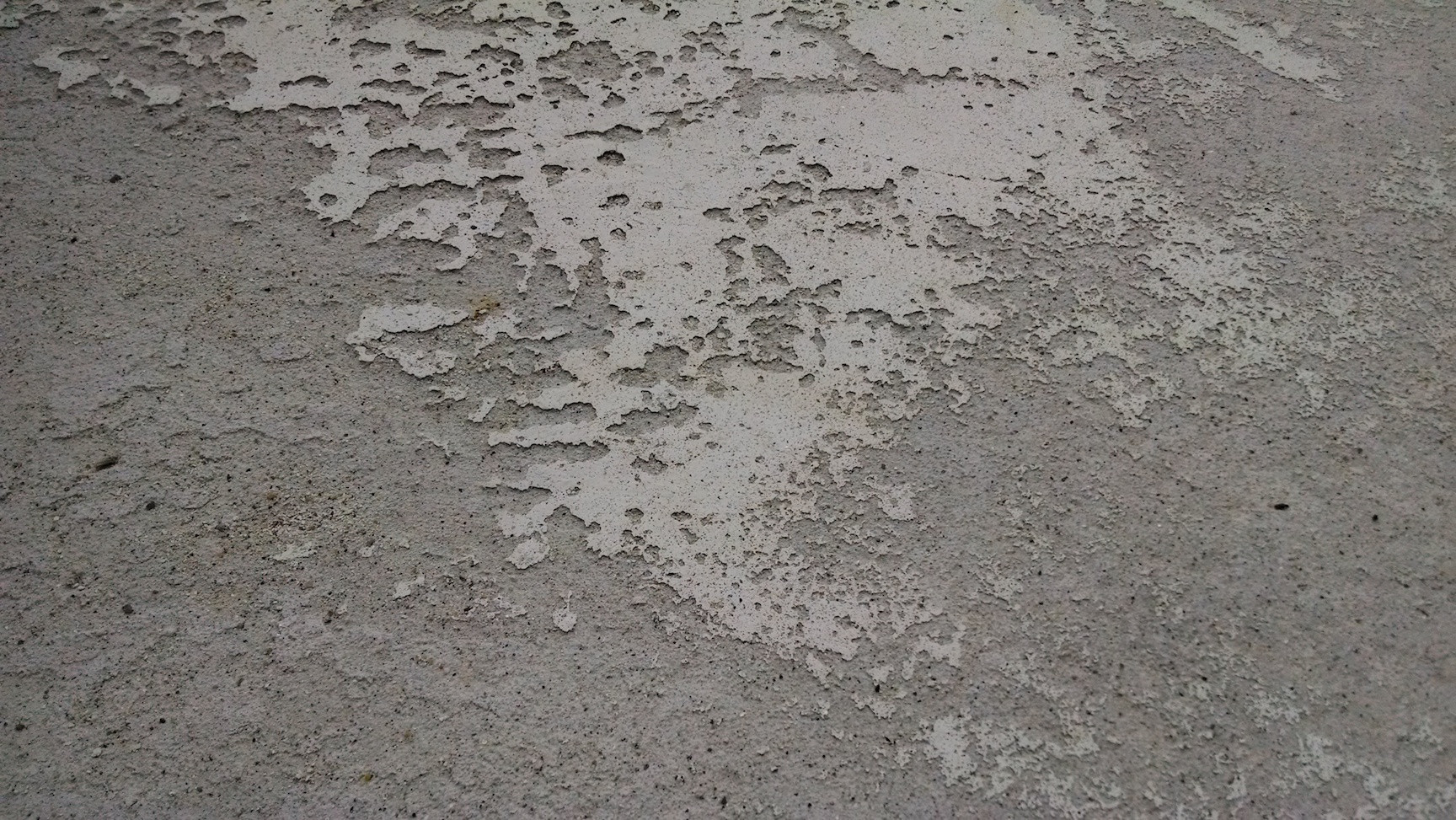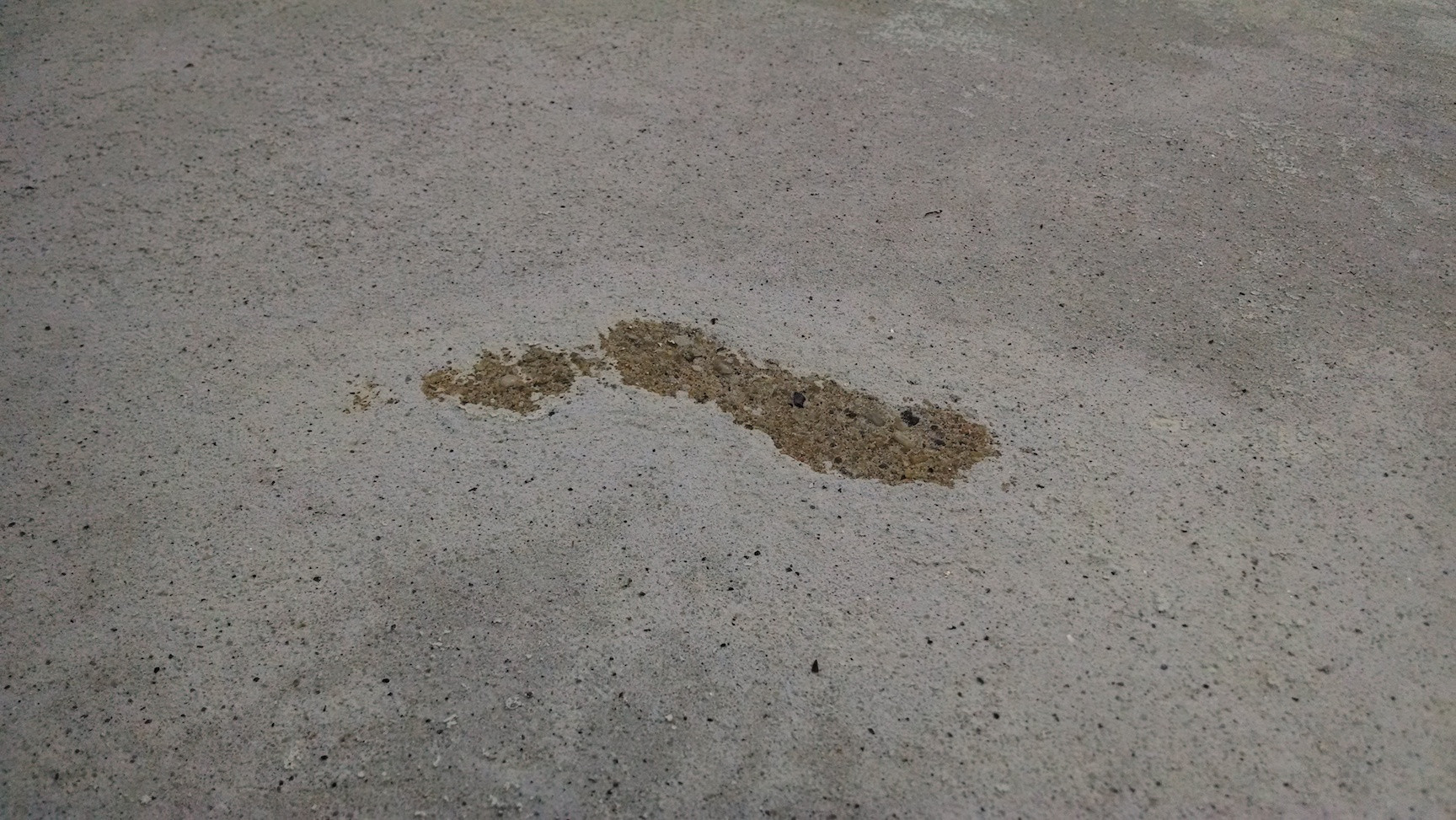I don't see any white in the pic, just the gloss gray surface surrounded by the etched surface.
The pool surface looks like it was etch with muriatic acid (as you already mentioned) in order to prep the surface for new plaster. This is what I understand that is done to remove loose scale on pool surfaces. It needs to be flushed thoroughly to cancel the etching.
Plaster can be colored as with any masonry cement or product.
The gunite or shotcrete base (concrete) will be under it about a 1/2" to 3/4" under it depending on how much the acid took off. I would be surprised to see that is yellow. It should be at least a light gray.
EDIT/ADDITION 6/6/14
The added picture helps me a bit, it confirms what I know what should be in place, regardless of the colors that present themselves. On my end I see gray plaster, if it is white, it really does not matter, it is a matter of esthetics. Bottom line it is plaster. The added picture also shows the concrete base, whether it be yellow in color, or not. Again I do not see the yellow if that is what you are referring to, but I do see the concrete base. The texture (albeit the picture could be a little more clear) and color on my ends says it is concrete base, which is usually applied with either of 2 methods which are sprayed in place. Gunite is one method, shotcrete is the other, although there are hand applied ways to do this too.
What I did not detail in my first post, was the first picture shows the original surface that was not removed by the acid for some reason. When the plaster is applied it is troweled in place to create a smooth surface. This portion may have been troweled to the point that is became harder than the surrounding plaster, or maybe other conditions created this.


